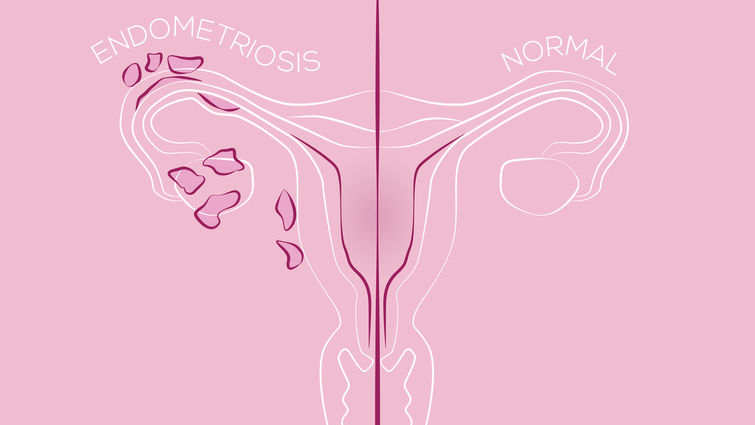

Illustration of endometriosis
Many women dread "that time of the month," which often brings mood swings, bloating, and uncomfortable cramps. However, women who suffer from endometriosis may find menstruation especially difficult to bear. Unlike a typical period, their periods are accompanied by excruciating cramps.
Endometriosis is a medical condition that affects women of reproductive age. It occurs when the endometrium, the tissue lining the uterus, grows outside the uterus, attaching to other organs such as the ovaries, fallopian tubes, and pelvic area. Approximately 1 in 10 women are diagnosed with endometriosis, making it one of the most common gynecological disorders.
SIGNS AND SYMPTOMS
The symptoms of endometriosis can vary in severity, and many women may not even realize they have the condition. Loma Linda University Health gynecologist Rebecca Gonzalez, MD, says there are five common signs to look out for.
Debilitating pelvic pain or cramps before or during menstruation (dysmenorrhea).
“It starts off with the complaint of having really bad cramping to the point of not being able to accomplish basic daily tasks,” Gonzalez says. “As years go by, especially if the pain is being dismissed or not actively managed, then you'll start to feel pain during the full week of having a menstrual period and eventually daily pain as the disease progresses.”
Gastrointestinal symptoms such as bloating, constipation, and diarrhea.
Increased urination frequency or bladder pain. These symptoms most likely happen during a menstrual period.
Infertility. Even so, many with mild to moderate endometriosis can still conceive and carry a pregnancy to term.
Painful intercourse (dyspareunia). Pain during or after sex is common with endometriosis.
“This is very common, and you don't have to suffer in silence and go years letting things progress to the point of being miserable every single day. If you are having pain symptoms that are interfering with your quality of life significantly, don’t ignore it, get seen,” Gonzalez says.
Endometriosis can be treated with a variety of options, including hormonal therapy, pain medication, surgery, acupuncture, physical therapy, and dietary changes.
An accurate diagnosis of endometriosis typically involves a pelvic exam, ultrasound, and sometimes a laparoscopic procedure. Women who suspect they may have endometriosis should seek medical attention from their healthcare provider specializing in women's reproductive health. Learn more or make an appointment online with an OB/gyn physician at Loma Linda University Health.

